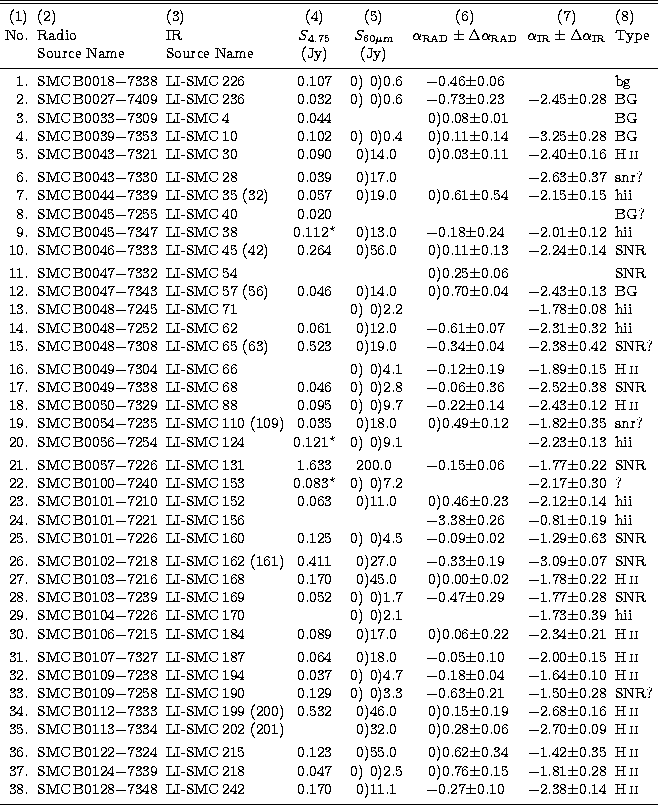|
 |
Data for all 38 sources in common are presented in Table 2. Entries
of this table follow the format of Table 1 except for Col. 4 where
the 4.85-GHz flux is listed rather than the 4.75-GHz flux. Radio spectral
indices are not given for eight sources which were detected at only one
radio frequency and for two sources for which radio data are only available
at two close frequencies (4.75 and 4.85 GHz). These sources are flagged in
Col. 4. No IR spectral index is given for four SMC sources, because of
their detection at only one IR frequency.
|
 |
Copyright The European Southern Observatory (ESO)